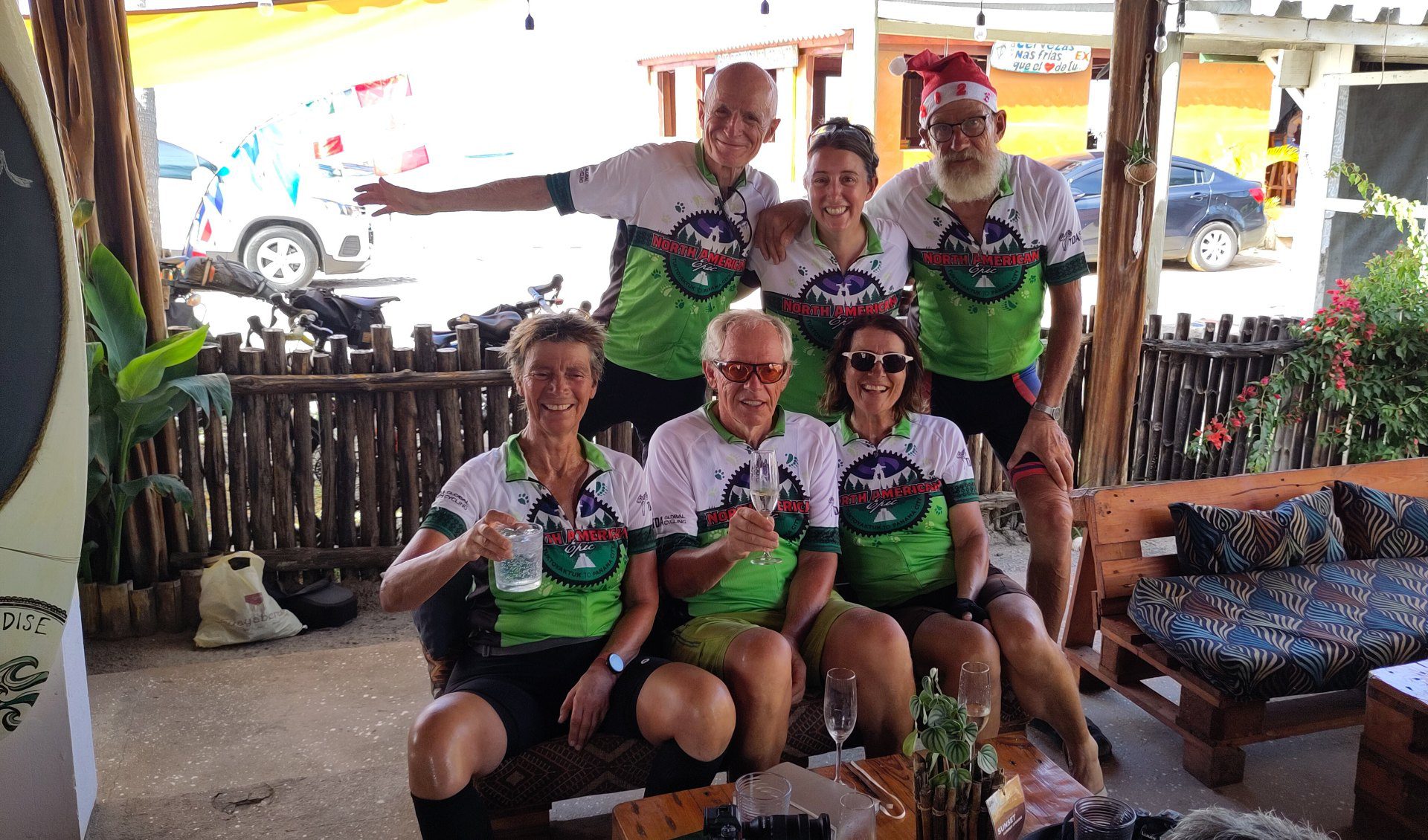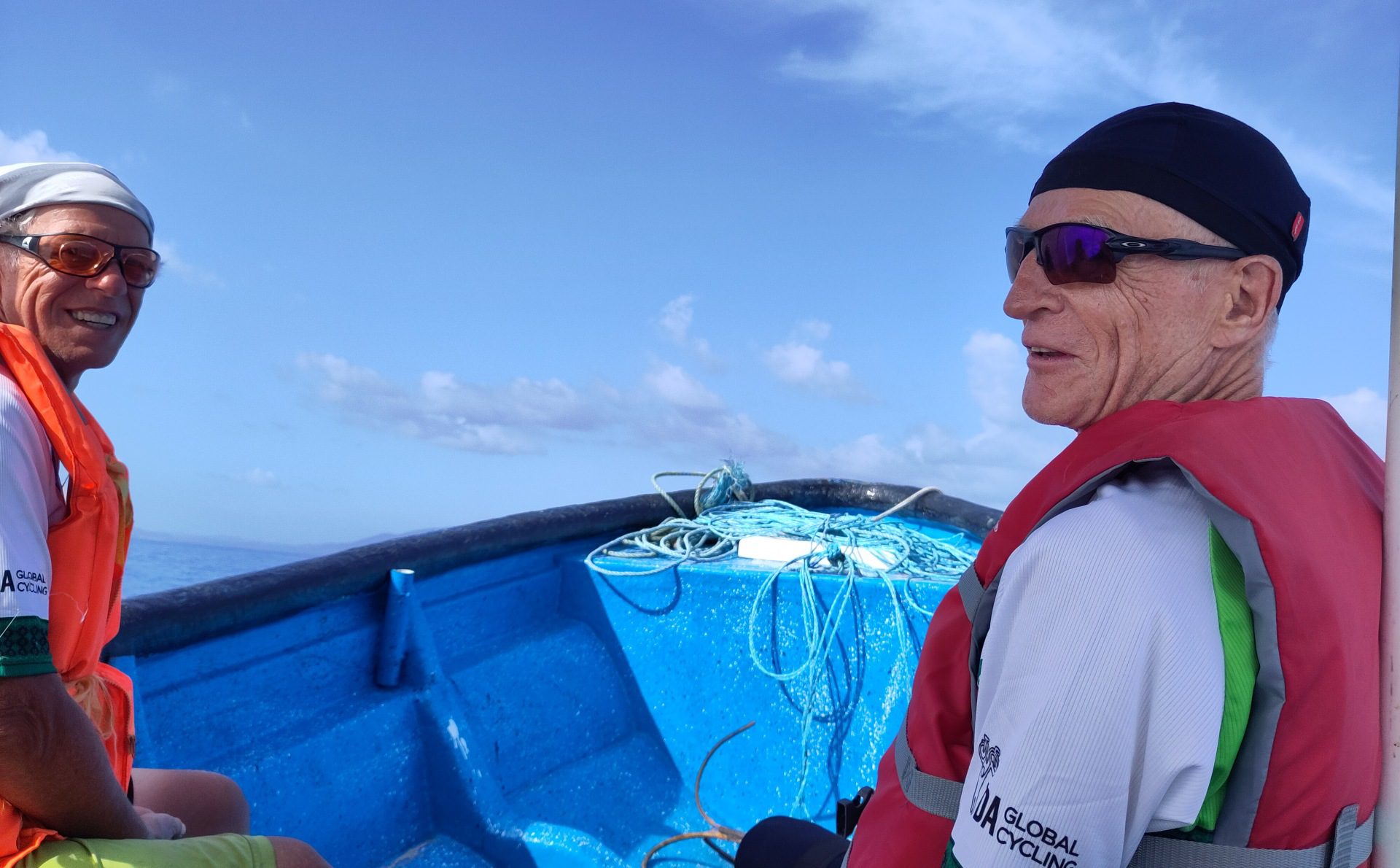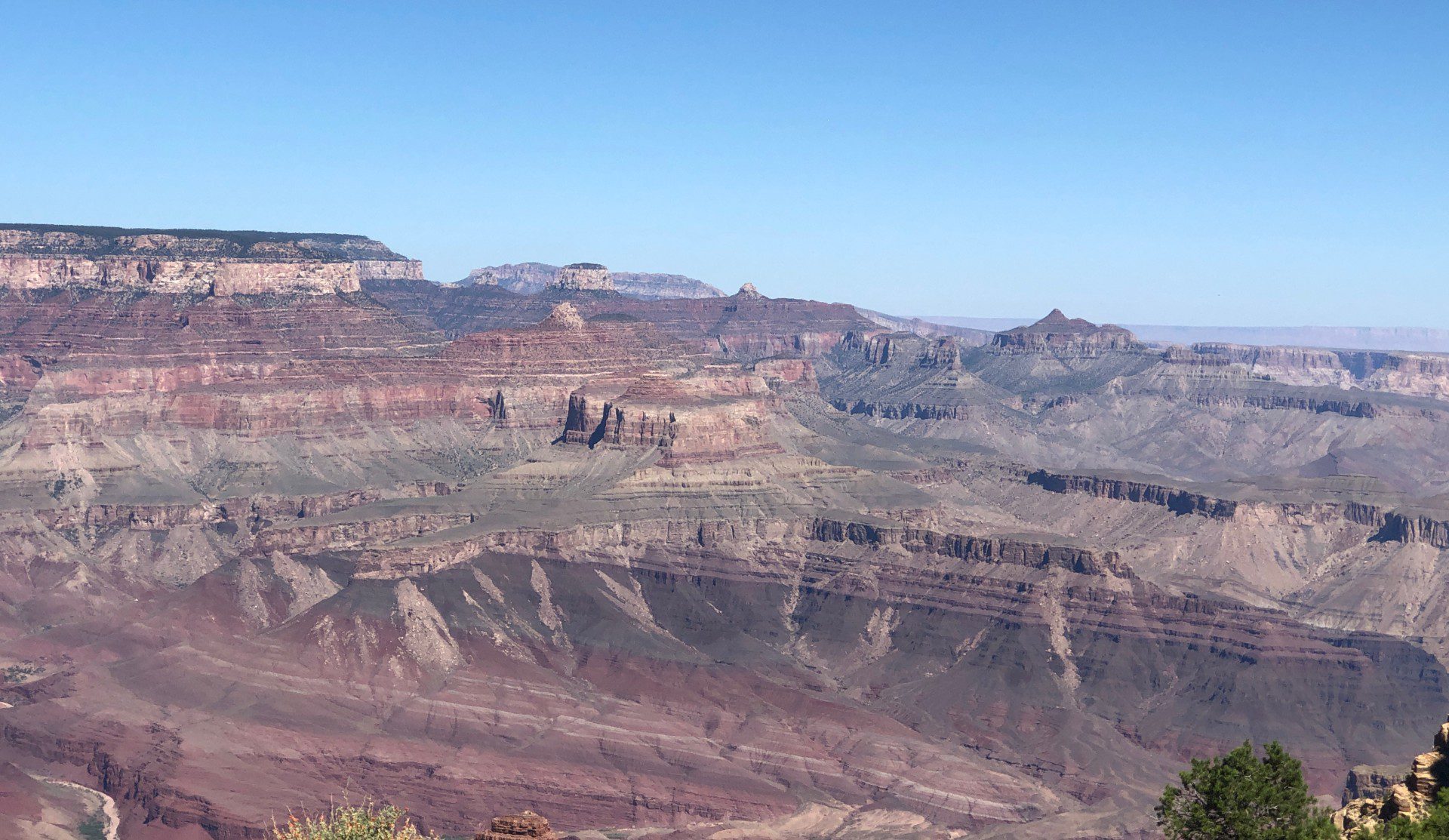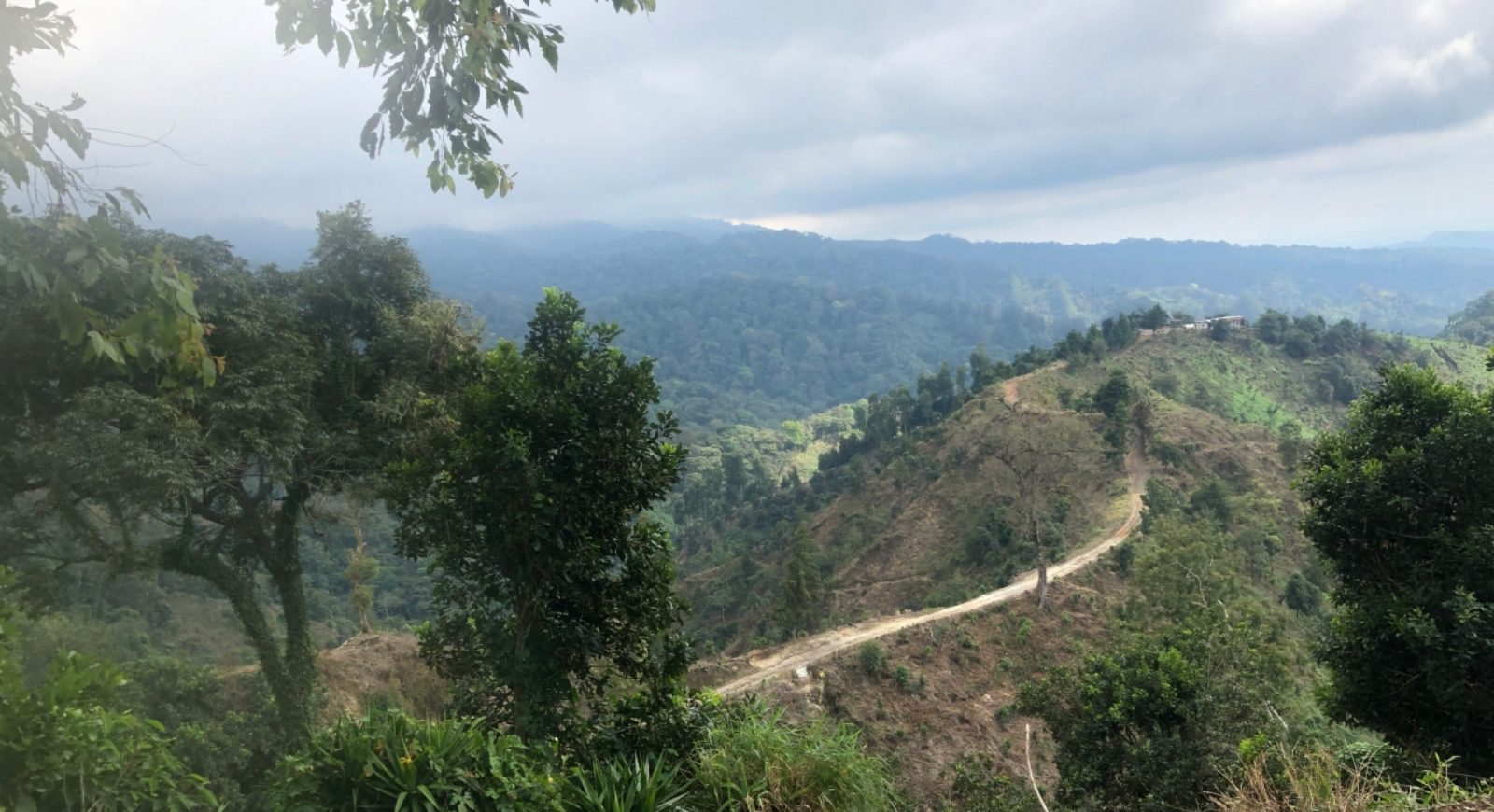Journey’s end
From the Rockies to the Sierra Madres
 Photo by:
Catherine Hardee
Photo by:
Catherine Hardee
The other day we cycled the last 100 km of this trek down the length of North America. What began nearly six months ago on the shores of the Arctic Ocean came to its conclusion at the Pacific by the entrance to the Panama Canal. For most of the previous days we’d been biking along the Pan-American Highway which had decent roadbed and shoulders until, curiously, we began approaching Panama City. The traffic intensified, the roar and whine of trucks and buses became deafening, the blaring horns sharper and more insistent, the road rougher and the shoulders overgrown and covered with debris, if it existed at all. Flats became a common occurrence. On our penultimate day my hefty rear tire was speared by a two-inch coil of wire and nail. To avoid the massive and dangerous traffic directly into Panama City we rerouted to Punta Chame, at the end of a long thin peninsula dotted with shrimp farms and mangroves across the bay from Panama City.
Our end point was Happy Corner, a rustic bar and restaurant owned by sisters Kathi and Janina. Kathi had come from Hamburg in Germany for the kite surfing and was locked down by Covid. She fell in love with the life and called her older sister who was in transition in her own life to come and join her. In a short while they had a thriving business.

We popped the corks on bottles of Prosecco and celebrated not quite believing that our journey was truly over. A couple of hours later we were hustled onto the beach and waded to three motor launches for the 90-minute crossing to Panama City. As our small boat, it only took five of us, slapped its way across the choppy waters, I had the feeling of riding a different form of jarring corrugated roadway. Every now and then the single outboard motor would splutter and seem to be on the point of dying. Our skipper would lift the cowling, tinkle with wiring and off we’d roar again. In the distance we could see the Bridge of the Americas, the entrance to the Canal and dozens of container ships spread across the waters waiting to enter.

It hasn’t sunk in yet. Even as we began our countdown, three weeks left, ten days left, our last day is on us, the finish never had a reality. It was abstract. A thing we knew in the way that we might know that matter consists of atoms; it has no meaning or impact on how we live. I’m on a rest day and tomorrow or the day after I’ll be back on the bike, my wormhole into an alternate universe where all that exists are pedal strokes, wheels turning, an unspooling road, tortuous ascents and madcap descents.
If there has been one defining characteristic of this trek it has been the mountains. Our route took us along the spine of the continent, the mountain ranges that run from the Alaska/Yukon border to southern Panama: the Rockies, the Sierra Madres, the Cordilleras. We tracked the Continental Divide, the system that separates the watersheds that drain into the Pacific from those that drain into the Atlantic oceans, criss-crossing it time and again. It is the distinctive geological marker of North America. It is more than that. It is a land of forests, rivers, and a diversity of wildlife. It has been home to First Nations peoples for millennia. As Europeans, the migrants of their day, pushed their way westward to the promised land on the Pacific coast the mountains were the great obstacle where many left their bones. Ohers were drawn to the towering peaks themselves, some to find their fortune, others for adventure and a few to escape encroaching civilization.

Which category did we fall into—this band of motley cyclists reaching for something that lies beyond our daily lives?
We were in the northern Rockies, doing long days, 140 to 150 km in on-and-off stormy weather. I had recovered from Covid and recuperated enough from a bad fall (all in the first week) to be back in the saddle. I was still having issues with my clip-ins that left me with residual nagging knee pain. Despite the rain, the aches, and the beginning of the climbs that would be our destiny for the next five months, I felt an atmospheric change in those days that had to do with spirit, as if the ancient indigenous sacral world of the mountains had brushed its wings against us in an act of transformation. The air was purer, pungent with the aroma of the pine forests. Herds of bison crossed our paths. A magnificent stag stared imperiously at our passing. We could hear the rivers and streams racing through the land urgently delivering their life-giving properties. Camping by the jade-green waters of Muncho Lake nestled among the Muskwa and Sentinal Ranges was like being at the portal to the ethereal world.
We crossed Muncho Pass, the northernmost pass in the Rocky Mountains to be traversed by a public highway. It was a long day of multiple climbs with gradients rising to nine per cent.. My legs were heavy and unresponsive. I wondered, not for the first time, what is it that has brought me here. Always, as I begin to sag, something happens to shift the mood. Towards the end of the day at the top of the longest climb I paused to breathe and take in the strange new world that was becoming my habitat. I heard a rustling sound. I turned and saw a young black bear emerge from the thickets. The bear stopped in mid-stride as startled by my presence as I was by his. We exchanged looks. It was only a couple of seconds. I felt no fear, more wonder. Something passed between us then the bear was gone and I went on my way.
It’s months later. I’m in Panama City a few days before Christmas. The city is ablaze with decorative lights. Nativity scenes abound amid tropical greenery. Soon I’ll be heading north to winter and my everyday life trailing wisps of the luminous clouds of what has been my other life. Wordsworth’s hymn to nature “apparelled in celestial light, the glory and freshness of a dream” comes to mind. “I hear the echoes of the mountains throng.”

In the early days many of us considered any climb over four or five km and six per cent gradient tough. Soon enough we were onto longer and steeper climbs. The Icefields Parkway from Jasper to Banff pushed our limits. The stunning vistas of glaciers, cascading waterfalls, turquoise lakes, towering rock spires and crags kept our legs circling the pedals. I remember the steep climb to the Columbia Icefield Skywalk, 11 km with gradients above 10 per cent and a headwind to boot. My shoulder was still tender from that early fall. It meant I couldn’t stand and push down on the handlebars. That was still too painful. I grind my way to the top. Off to my left were a dozen or more tourist buses. The Glacier Skywalk, an observation platform 218 m (918 ft) above the Sunwapta Valley, was teeming with people. As I cycled past I felt a tingle of pride in coming here this way, under my own steam. Through the thickening crowd of cars and RVs I was still able, here and there, catch a glimpse of that other realm, the ancient power that haunts the hills and mountainsides even as the melting glaciers tell a sadder story.
We streamed through mountains and valleys encapsulated in a bubble of our own fashioning. We were like the scientists in that 1960s film Fantastic Voyage who are shrunk to a microscopic size and injected into a human body. The landscapes around us morph, take on unexpected dimensions. Our voyage is as fantastic and inward, in another way. The rhythm of the road is the rhythm of our blood and our breath. We are moving to the distant beat of a drum buried under the layers of our years and half-forgotten dreams.
The world we have left behind, however temporarily, will not be denied. It seeps in, disturbing and unsettling. The war in Ukraine drags on. Cities are razed, children killed, young men are dying to satisfy what—the pride of one autocrat? Even as the world attempts to return to normal, Covid lurks, imitatio of classic 1950s B horror/sci-fi movie. As we cycle through the States, I can’t help but feel the shadow of the January 6 hearings and all that it says of an America in torment. The COP conferences on climate change and biodiversity sound the alarm even more urgently of our planet in peril. It’s a tocsin that rings more insistently to us on our bicycles for we are grounded in the earth, touch its wonders and see their erosions
What I see and hear in my encounters across the continent is none of that. The people I meet, like Tod and his family in Yuma, are doing their best to get by, to put food on the table, to raise their children, to find satisfaction in the small pleasures of life. Almost invariably, I am greeted with welcome and openness.

We were passing through Navajo tribal lands riding on the outer edge of Monument Valley. I had been sweating my way kilometre after kilometre on that long day’s ride in the desert heat when they rose in the distance, a shimmering mirage in red and ochre. I stopped on a rise and gazed for a long time at the scattered buttes, giants in sandstone, frozen like stranded aliens from a long lost planet. The valley before me interweaved in my mind’s eye with the images that had captured me as a child when I sat mesmerized before the Westerns John Ford had filmed here. I had been young and naïve, a time when films were more potent than drugs. Here in front of the reality of that land, engaging with it in the intimacy of two wheels, it was still impossible to shake off completely the power of Ford’s iconic imagery even as I understood and yearned for the other, richer, sacred world that lay within the myths and tales of the Navajo.

A couple of days later I climbed my way to the Grand Canyon national park. For the next few hours I rode along its eastern rim taking in as best I could its staggering grandeur, its harsh beauty, the stratified lines across its rock formations like the painted face of a warrior. To come here on a bicycle creates a different relationship to the land. It is the pace at which one travels. It is the exposure to it. It is the intensity of physical effort to gain the top of the Canyon. The way I breathe and move has altered the chemical structure of brain and body. In my fancy, feathers sprout along my arms and legs. I am birdman now soaring on the great thermal currents. I have entered into the world of myth through the portals that lie within the stark walls of this great canyon.

It was a long, steady climb (25 km) up Mingus Mountain, about 100 km southwest of Flagstaff in central Arizona. I took my time enjoying the ascent to cooler air amid junipers and Ponderosa pines. It was our last major climb in the United States. Five days later we crossed the border into Mexico. My legs have become stronger. Somewhere along the way I discovered that I could power my way up hills standing for many kilometres at a time. It was accidental. It had taken a few weeks for my shoulder to heal so that I could stand and put pressure on the handlebars. Then I could pedal for a couple of hundred metres or so before my legs begged for relief. One day I told my legs, “it’s ok, you can do more.” Somehow they acquiesced; an initial bout of aching lapsed after a few minutes. I was off and away.

In our three weeks traversing Baja California we lost some of our climbing fitness. There was barely one day with an ascent of more than 1,000 m. That changed dramatically once we crossed to the mainland. We started off with a bang, over 2,000 m of ascents. It continued that way pretty much right through to Guatemala. The climbs were longer and steeper, often on worse roads, sometimes on cobblestones. The day we rode into Mexico City we pushed our way to the highest point of the trek, 3,600 m (11,800 ft). But it was Guatemala that tested our very souls.
We had an intimations of what lay ahead within meters of crossing the border: a short, sharp rise with a 13 per cent gradient. Then came three of our most intense cycling days.
A couple of years ago this magazine published an article on how gradients are measured and what they tell you about climbs. It began like this:
As a cyclist, you know that a four per cent climb isn’t that bad (unless it’s a long one) and you shudder when you hear that the maximum gradient on Alpe D’Huez is 13 per cent.
It gives some perspective on what follows. On the first day we cycled from Coatepeque to Quetzaltenango, a short distance, only 62 km. The first 40 km was a 2,500 m (8,200 ft) climb. The second half was the killer; it had most of the elevation and consisted of gradients ranging from 10 to 18 per cent. It took me 5 hours to do the climb.
The second day, from Quetzaltenango to Atitlan, was tougher. Our legs had taken a beating and there was no time for recovery. The big climb came towards the end of a 103 km day, 1,700 m of elevation over 26 km with constant dip and rise and gradients hitting 20 per cent.

Then came day three: Atitlan to Antigua. 112 km and 2,200 m to climb. The kicker was the start: 21 km of the steepest hills yet. At one point the gradient shot up to 28 per cent. I thought back to the first days when anything over six or seven per cent was a challenge. Now, I was grateful when our ascent eased off to nine or ten per cent.
I met the challenge; I did all three days from start to finish (less than half of the group cycled the full days). I had driven myself in ways that were unexpected to me. I had never thought of myself with that force of will. There were days earlier in the trek that were less onerous and which I had faced with greater difficulty. Had I changed in the interim, become someone else? Not really. I think what happened is that in some ways, all along, the mountains, in their majesty, in their splendour, in their awesomeness, had played their tune on me, called into presence selves unknown to me. And I danced to their magical airs.


